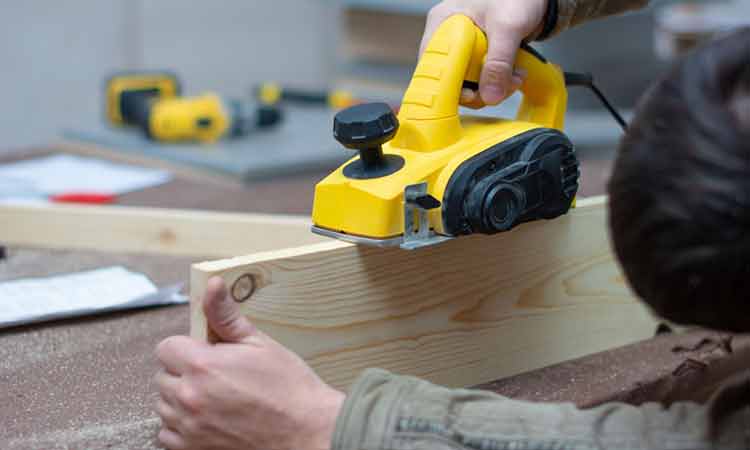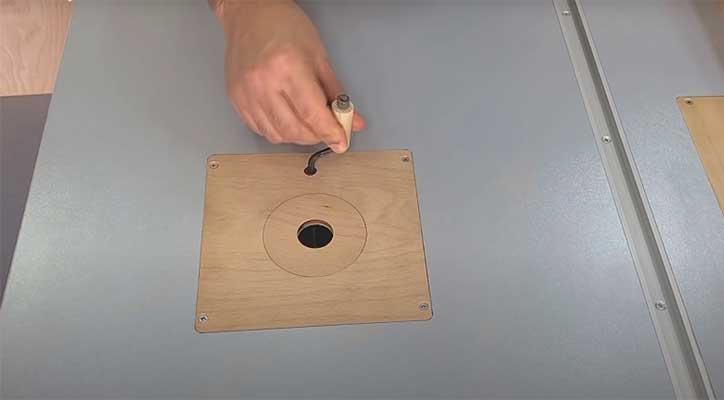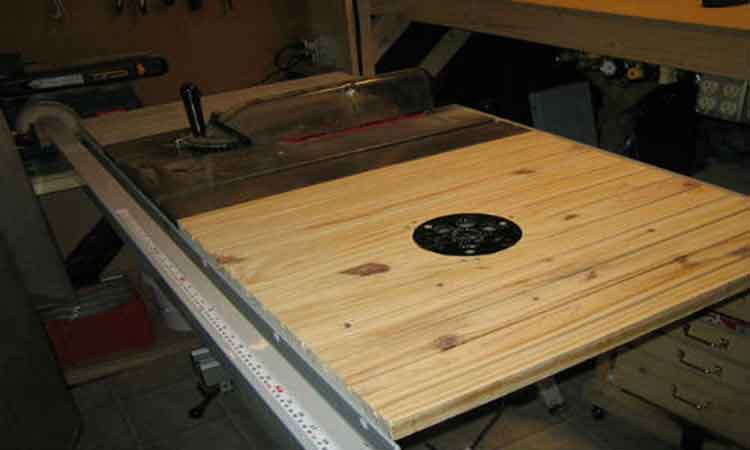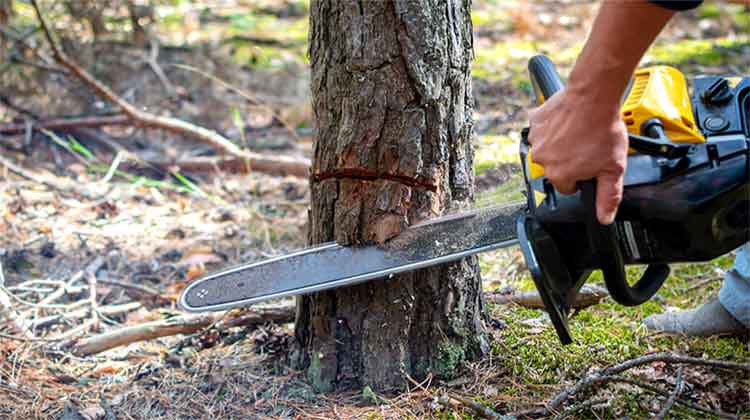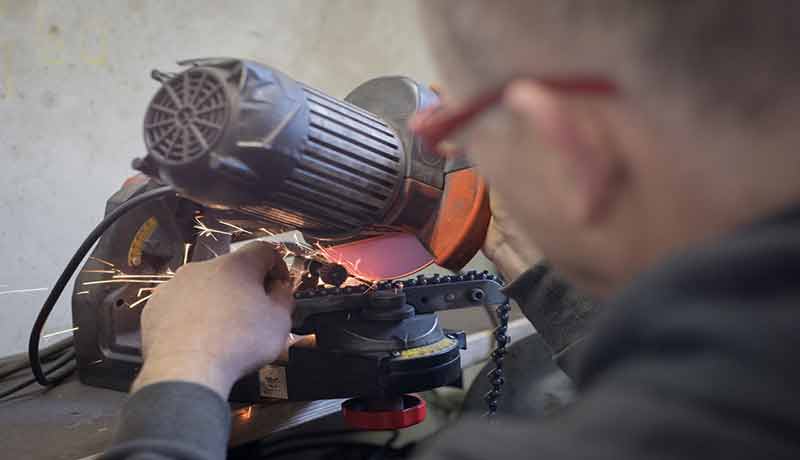Wood is one of the most versatile materials used in different projects. It can be used in any form and joined together in many ways. The number of ways wood can be utilized is only matched by the number of tools that can be used to work it. Planer is one such helpful tool and therefore, it is important to know how to use a planer.
How To Use A Planer
If you want to use wood of a particular size – you can use a saw to cut it. For joining pieces of wood together, the joinder is your best friend. There will be times when you will need to use wood with smooth surfaces.
The finished wood may be used for different purposes – tables, cabinets, and doors are a few examples. No wood comes out smooth without some working on it and a planer is needed to smoothen it out.
So, What Is A Planer? Know It Here
A planer is a tool that can be used to produce smooth and flat wood surfaces. It works by cutting and shaving out uneven and/or rough parts of wood until the desired surface is achieved. Players can be manually operated or electrically powered.
Electric planers are very powerful tools which can be used to work with bigger pieces of wood. Those which are manually operated by hand, however, are useful in working with smaller projects which require a more delicate approach.
Although the overall concept is the same for thickness planer, there are differences on using them. Electric planers do not require much effort as they are powered electronically.
The same cannot always be said with regard to hand planers as these tools would require a corresponding amount of effort from the user depending on the project.
Requiring smooth surfaces will not be uncommon when it comes to working with wood materials. As such is the case, knowledge on how to use a planer is integral in working with wood or in maintaining a project!
Benefits Of Using A Planer – Know Here
Efficient Tool Overall
Knowing how to use a planer is a healthy addition to one’s set of skills as this tool as overall a highly efficient device. It requires minimal effort and can do a number of planing projects with relative ease.
Learning how to use it is also not that hard. Having an electric planer on hand is a great help especially when it comes to working with larger projects.
Easy To Use
An electric planer is a breeze to use. Just turn it on and run it across! Although it would take proper balancing and pacing, the concept surrounding the steps on how to use a planer is very easy to grasp.
The other things that you should be taking care of when using the planer would come out naturally, so you don’t need to be conscious of everything at the same time.
Produces Uniform Results
Because it is motorized, electric planers almost often produce the same results for as long as they are properly used. This is helpful as working with uneven or even differently-sized wood surfaces would be much more. It would be difficult and would most often require further processing.
While this may be dependent still on the user, knowing how to use a planer properly can often guarantee uniformity in the results produced.
Using A Planer The Best Way
Set Up Your Materials And Tools
First thing is to know about how to use a planer is to have your entire stuff ready in your workstation. Proper setting up smoothens out the entire process and can even make it faster.
Make sure that the wood surfaces that you will be working on are properly secured and balanced. These steps will ensure that you will get a fine and even cut.
Run The Planer Through The Wood Surface
Once everything is ready, fire up your planer and carefully run it through the surface. Electric planers require some effort to drive it along the surface, but not as much as the force needed to work with hand planers.
Hold the planer properly and guide it through the surface that you wish to plane. Controlling can be done by keeping one hand on the front of the planer for control and the other hand at the back for balance.
Maintain Uniform Balance And Pace
You will need to maintain proper balance and posture when working with hand planers to be comfortable when working electric planers. Planing jobs may take a huge chunk of time and using it in an uncomfortable position is definitely not advised.
Likewise, the proper pacing of the planer when working it across your planes should be maintained in order to achieve uniformly smooth surfaces. Uneven pacing may sometimes result in likewise uneven surfaces.
Repeat As Many Times As Necessary
Running your planer once won’t usually be enough unless you are already applying finishing touches. You may need to run it several times in order to achieve the desired results.
Remember to keep tabs on your runs, especially when working with a number of wood surfaces, in order to produce uniform results across all of them. Also don’t forget to be mindful of the other steps on how to use a planer when making repeat runs.
Helpful Tips And Tricks On Using A Planer
Proper Maintenance
Keeping your power tool working in optimum conditions is a definite must. Having planers with dull blades would just delay everything and will eventually just produce substandard results.
Make sure that the blades are also properly mounted whenever you take them out for replacement or sharpening. This is done in order to avoid causing damage both to the tool and your wood surfaces.
As with knowing how to use a planer, knowing how to maintain it is a must for a longer useful life.
Secure And Organize Your Workstation
While it is a good idea to have everything you need in front of yourself when you start your project, it is likewise important to have all these stuff properly arranged and secured and this is an important aspect in knowing how to use a planer.
Little trinkets that are unsecured can get in the way and can be just accidents waiting to happen if left lying around. Securing your wood is also necessary as you don’t want yourself slipping through it while holding a mechanical rotating blade that is turned on.
Check Your Wood Board After Every Run
This is so you’ll know when you are already finished. You wouldn’t want to waste effort in running again it across. Doing so may result in products which are not uniform and these may cause additional problems later on. Efficient working goes hand-in-hand in knowing how to use a planer.
Always Be Careful
Handle the planer with care to avoid accidents and injuries. Improper use of the planer can produce disastrous results. They are also not objects to be played with.
Rotating blades and soft fingers are not an ideal combination. Prevention is always better than the cure and this knowing how to use a planer is not different.
Common Mistakes While Using A Planer And How To Avoid Them
Using The Wrong Planers
As earlier mentioned at the onset, certain kinds of projects would require a specific kind of planer. Jobs that require finer and more delicate cuts will need a hand planer. On the other hand, it is highly impractical to use the same kind of planer for industrial and commercial needs.
Knowing which type to use is just as important as how to use a planer. You wouldn’t want to ruin that small project by running it across an electric planner. Likewise, just imagine the effort that will be used and wasted in attempting to use a hand planer for larger projects.
Improperly Matched Planers
There are many electric planers available on the market and getting one which matches your needs and getting one which matches perfectly with your project is just as important as knowing how to use a planer. Some planers can cut too deep, and others have larger cutting areas.
The problem comes around when you have a small and thin surface which does not need lots of shaving but what you have is a planer that does just that. Likewise, smaller wood surfaces do not befit a very large planer. It is thus important to get planers which match your requirements in order to avoid the unnecessary hassle.
Uneven Pacing
Uneven pacing may be inadvertently done as repeatedly guiding the planer across various wood surfaces can be very tiresome and would eventually lead to fatigue, especially during long runs. There may be times that you think that you are still working at a uniform pace, but not in reality because of tired and heavy arms.
Always keep yourself in check when working with planers for an extended period of time and don’t forget to take short breaks in between to keep your muscles refreshed.
Planning To Plane – You Are All Set Now!
A planer is among the most task-specific tools that you can find in the workshop and to know how to use one (or more) is definitely a good addition to your skillset!
When learning to use this tool, always keep in mind the basic know-how, most especially the tips regarding your own safety. Several practice sessions would make you already proficient!
The Conclusion
Now that you know how to use a planer, you are all set to do some lovely woodworking. In no time, you’ll be working well on your way to becoming a master planer!

